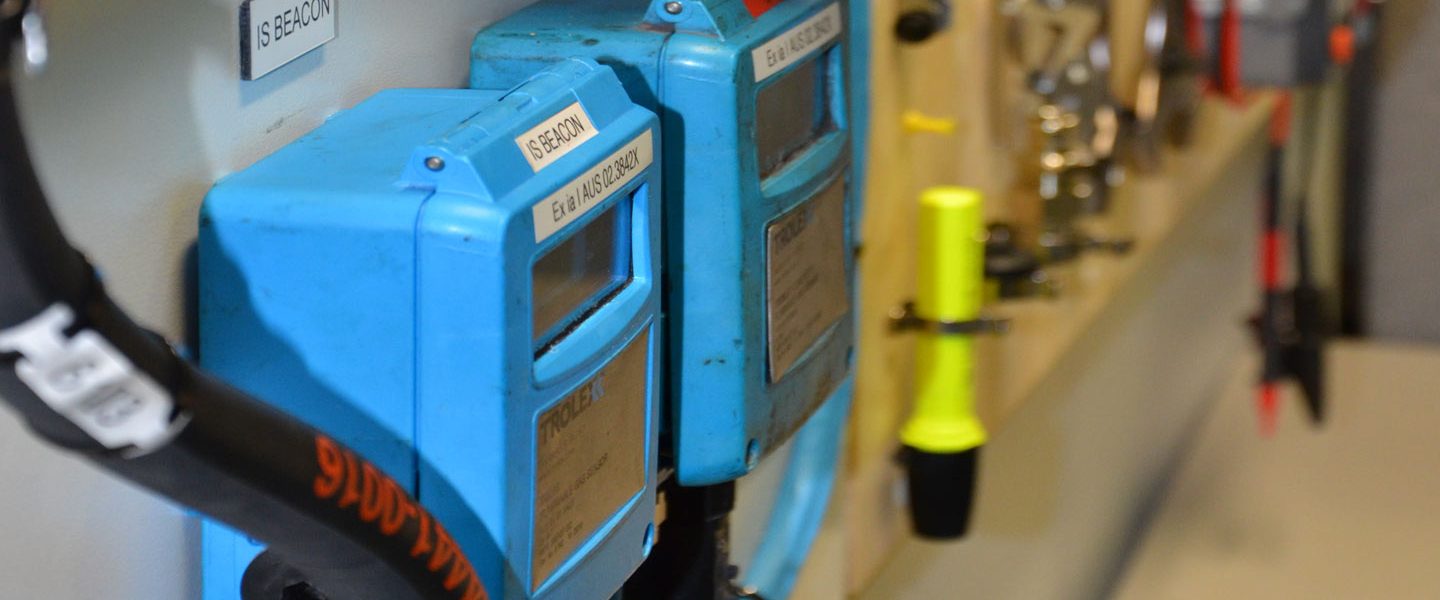Little Known Facts About Roar Solutions.
Little Known Facts About Roar Solutions.
Blog Article
Rumored Buzz on Roar Solutions
Table of ContentsAll About Roar SolutionsThe Definitive Guide to Roar SolutionsGetting My Roar Solutions To Work
In order to shield installations from a prospective explosion a method of analysing and classifying a possibly harmful area is required. The objective of this is to make sure the appropriate selection and setup of equipment to inevitably protect against a surge and to make sure security of life.
(https://www.interweave.com/plus_old/members/roarsolutions/profile/)
No tools ought to be installed where the surface temperature of the devices is higher than the ignition temperature level of the offered danger. Below are some usual dirt unsafe and their minimum ignition temperature level. Coal Dirt 380C 225C Polythene 420C (thaws) Methyl Cellulose 420C 320C Starch 460C 435C Flour 490C 340C Sugar 490C 460C Grain Dirt 510C 300C Phenolic Resin 530C > 450C Aluminium 590C > 450C PVC 700C > 450C Soot 810C 570C The likelihood of the hazard being present in a concentration high enough to create an ignition will certainly differ from area to area.
In order to classify this danger an installation is split right into locations of risk depending upon the amount of time the hazardous is existing. These locations are referred to as Zones. For gases and vapours and dusts and fibers there are three zones. Zone 0 Area 20 A hazardous atmosphere is highly most likely to be present and may be present for extended periods of time (> 1000 hours each year) or also continually Area 1 Area 21 An unsafe environment is feasible yet unlikely to be present for extended periods of time (> 10 450 C [842 F] A category of T6 indicates the minimal ignition temperature level is > 85 C [185 F] Unsafe location electric equipment possibly developed for use in greater ambient temperatures. This would showed on the ranking plate e.g. EExe II C T3 Ta + 60C( This indicates at 60C ambient T3 will certainly not be surpassed) T1 T1, T2, T3, T4, T5, T6 T2 T2, T3, T4, T5, T6 T3 T3, T4, T5, T6 T4 T4, T5, T6 T5 T5, T6 T6 T6 A T Class ranking of T1 means the maximum surface temperature created by the instrument at 40 C is 450 C. Thinking the connected T Class and Temperature level rating for the tools are proper for the area, you can constantly utilize an instrument with a more stringent Department score than required for the area. There isn't a clear solution to this inquiry regrettably. It truly does depend on the kind of devices and what repair services require to be accomplished. Tools with details test procedures that can't be executed in the area in order to achieve/maintain third party ranking. Must come back to the factory if it is prior to the tools's service. Area Repair Work By Authorised Employee: Challenging screening may not be required nevertheless particular treatments might require to be followed in order for the devices to keep its 3rd party score. Authorized personnel have to be utilized to perform the work appropriately Repair service must be a like for like substitute. New component have to be considered as a direct substitute requiring no unique screening of the tools after the repair work is total. Each item of tools with a dangerous ranking need to be evaluated separately. These are outlined at a high level below, however, for more in-depth details, please refer straight to the standards.
Roar Solutions Things To Know Before You Buy
The tools register is a detailed database of tools records that consists of a minimum set of areas to determine each thing's place, technological criteria, Ex lover category, age, and environmental information. This info is vital for tracking and taking care of the tools properly within harmful areas. On the other hand, for regular or RBI sampling assessments, the grade will be a combination of In-depth and Close evaluations. The ratio of Comprehensive to Shut inspections will certainly be figured out by the Equipment Threat, which is analyzed based upon ignition danger (the probability of a source of ignition versus the likelihood of a combustible atmosphere )and the harmful area classification
( Area 0, 1, or 2). This variant will likewise influence the resourcing demands for job prep work. Once Whole lots are defined, you can create sampling plans based upon the example dimension of each Lot, which refers to the variety of arbitrary tools things to be inspected. To figure out the called for example dimension, 2 facets require to be evaluated: the size of the Lot and the category of examination, which indicates the degree of initiative that ought to be used( reduced, typical, or raised )to the evaluation of the Great deal. By incorporating the group of evaluation with the Lot dimension, you can then develop the appropriate denial standards for an example, meaning the allowed variety of damaged things located within that example. For more details on this procedure, please describe the Power Institute Standards. The IEC 60079 standard suggests that the maximum period in between inspections need to not go beyond 3 years. EEHA assessments will also be conducted beyond RBI projects as part of set up upkeep and devices overhauls or repair services. These assessments can be credited toward the RBI sample sizes within the affected Whole lots. EEHA examinations are performed to recognize mistakes in electric equipment. A heavy scoring system is necessary, as a single tool may have several faults, each with differing levels of ignition threat. If the consolidated score of both evaluations is much less than twice the fault rating, the Great deal is deemed acceptable. If the Whole lot is still thought about undesirable, it has to undertake a complete evaluation or reason, which might set off more stringent assessment protocols. Accepted Great deal: The reasons of any mistakes are identified. If a typical failing mode is discovered, added equipment might call for evaluation and fixing. Faults are categorized by seriousness( Safety and security, Integrity, Home cleaning ), making sure that urgent concerns are assessed and attended to promptly to reduce any kind of effect on safety and security or procedures. The EEHA data source should track and videotape the lifecycle of faults together with the rehabilitative activities taken. Implementing a robust Risk-Based Assessment( RBI )approach is essential for making sure conformity and safety and security in managing Electrical Equipment in Hazardous Areas( EEHA) (electrical refresher course). Automated Mistake Scoring and Lifecycle Management: Effortlessly take care of faults and track their lifecycle to enhance examination precision. The intro of this assistance for risk-based examination better reinforces Inspectivity's placement as a best-in-class solution for governing conformity, along with for any kind of asset-centric examination usage case. If you have an interest in discovering a lot more, we invite you to request a demonstration and discover exactly how our service can transform your EEHA monitoring procedures.
Some Of Roar Solutions

In regards to explosive threat, an unsafe location is an environment in which an eruptive environment is present (or might be anticipated to be present) in amounts that require special precautions for the building and construction, installment and use tools. eeha. In this write-up we explore the challenges dealt with in the office, the threat control steps, and the required proficiencies to work securely
It is a consequence of modern life that we produce, store or manage a variety of gases or liquids that are considered flammable, and an array of dusts that are deemed flammable. These materials can, in certain problems, create explosive ambiences and these can have major and awful consequences. The majority of us are acquainted with the fire triangle eliminate any kind of one of the 3 components and the fire can not happen, however what does this mean in the context of dangerous areas? When breaking this down right into its easiest terms it is basically: a combination of a certain amount of launch or leak of a specific material or material, blending with ambient oxygen, and the visibility of a source of ignition.
In most circumstances, we can do little regarding the degrees of oxygen airborne, but we can have substantial influence on sources of ignition, for instance electrical tools. Hazardous areas are documented on the dangerous area classification drawing and are determined on-site informative post by the triangular "EX-SPOUSE" indication. Below, among various other key information, areas are split into three types depending on the danger, the chance and period that an explosive environment will exist; Area 0 or 20 is regarded the most hazardous and Area 2 or 22 is considered the least.
Report this page